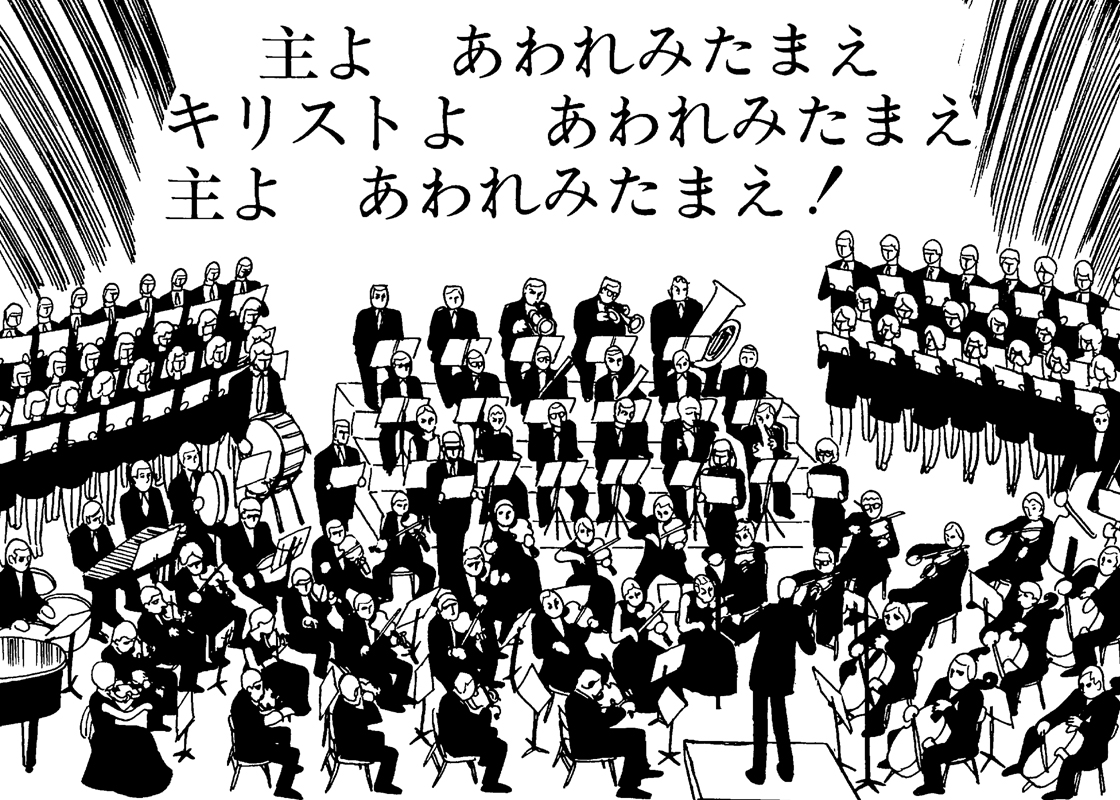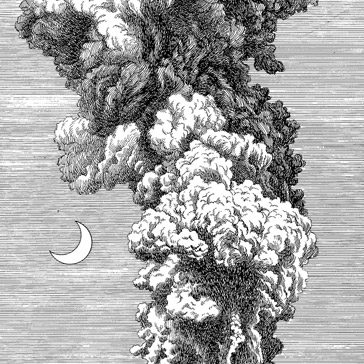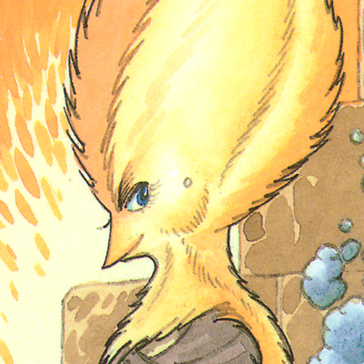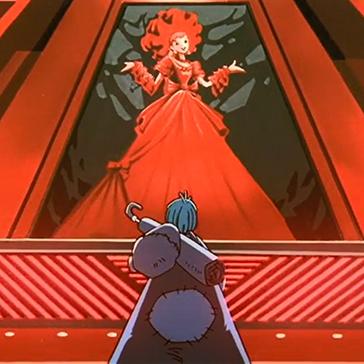
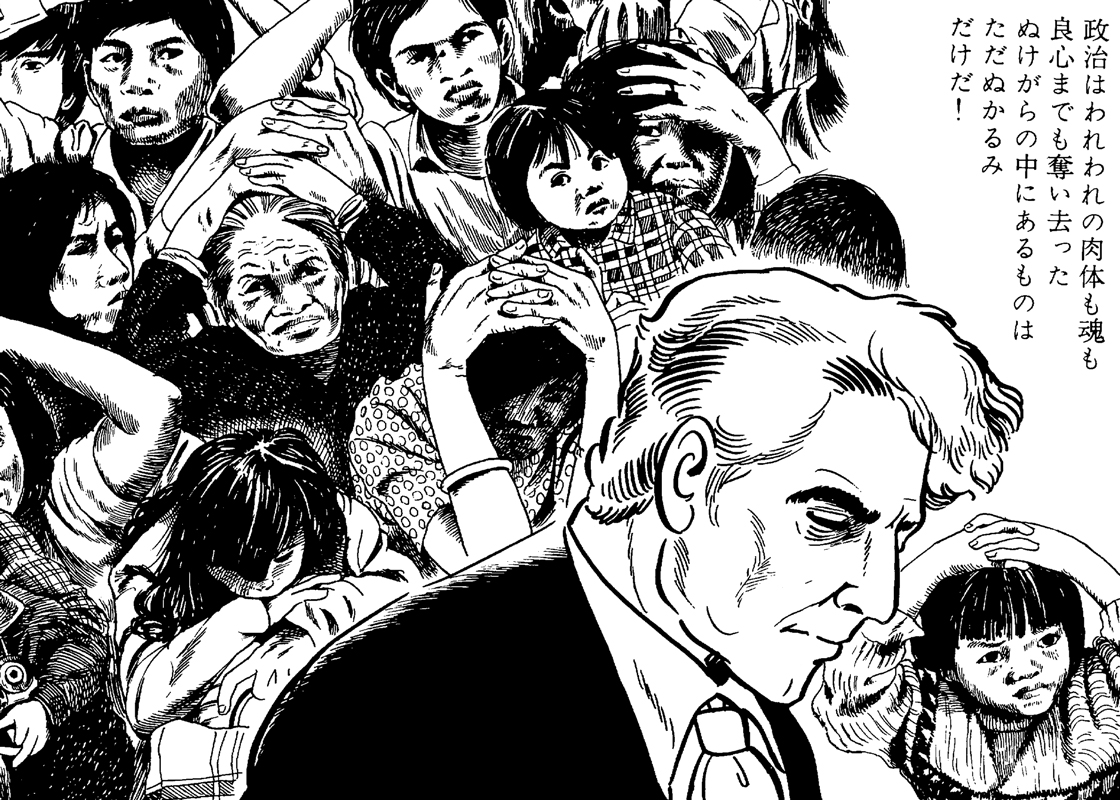
STORY
This short work is a true-to-life story about “A Concert for Peace” conducted by Leonard Bernstein on Jan. 19, 1973. Tezuka solemnly depicted the historic event with his anti-war message.
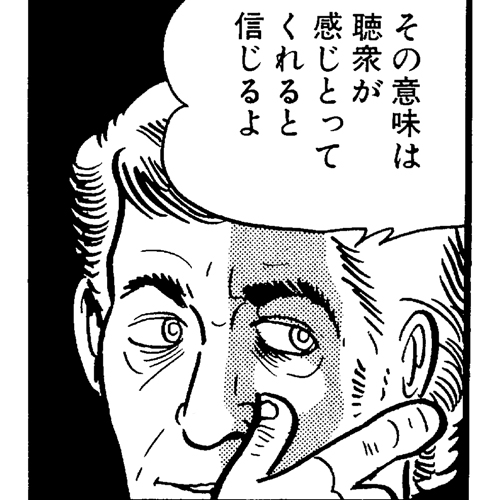
DESCRIPTIONS
1974/08/12 Published in FM Recopal (Shogakukan)
In this work, it rains relentlessly, symbolizing Tezuka’s anti-war sentiments. On January 19, 1973, on the cusp of the 15-year Vietnam War's conclusion, “A Concert for Peace” conducted by Leonard Bernstein took place at Washington Cathedral, drawing an audience of about 10,000 despite the heavy rain. Simultaneously, another concert was held to celebrate the re-election of the U.S. President, but attended by only a small audience.
The stark contrast between these two events highlights the disconnect between U.S. government officials and the citizens, reflecting a silent protest against the government that remained invested in a victorious war effort. During the scene where the orchestra performs with the chorus, Tezuka presents powerful lyrics that seem to visualize Bernstein and the American public's strong opposition to war, which challenges the government’s vanity at that time.
The U.S. president depicted in the work is modeled after President Nixon, who negotiated with North Vietnam. He is shown frowning as he passes the concert, eventually appearing worried, reflecting his sense of failure. Through Haydn's "Mass in Time of War," and the rain Tezuka effectively conveys his anti-war message in this brief yet impactful work.

